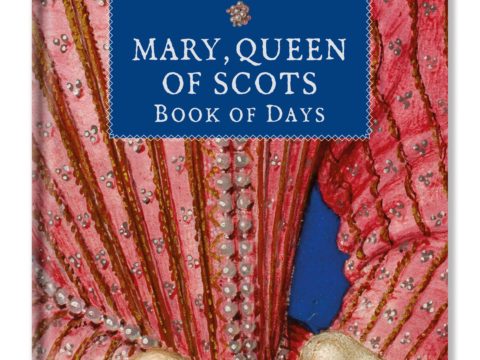Elizabeth of York: Life Story
Chapter 5 : Trapped in Sanctuary
Queen Elizabeth was desperate to hold on to her younger son. There was no point in anyone attempting to supplant King Edward so long as his brother was alive. But on 16th June, Westminster Abbey was surrounded by Gloucester’s troops. The Archbishop of Canterbury, Thomas Bourchier, went in to persuade her to let Richard come out and join his brother the King.
The Queen fought against it, but eventually gave in, comforted by the Archbishop’s promise to protect the boy. She herself, along with Elizabeth and her sisters, refused to emerge whilst Richard joined his brother in the Tower.
Eight days later, Dr Ralph Shaa preached at St Paul’s on the text ‘bastard slips shall not take root’. Again, there is some inconsistency amongst historians as to what the meat of his sermon was. Some suggest that he dragged up a rumour that had been floated a few years before, that Edward himself was illegitimate, the son of an archer, others that Edward’s children were illegitimate as he had been precontracted to marry Lady Eleanor Butler, nee Talbot, when he married Elizabeth Woodville, others that both claims were made.
Whatever was initially said, matters proceeded based on the second allegation – that Elizabeth and her siblings were illegitimate. The story was fraught with difficulties. Both Edward and Eleanor were dead, so could not be questioned. No witness to such a wedding were produced, the story had come from an unnamed source (the French minister Philip de Commynes named the sources as Robert Stillington, Bishop of Bath and Wells, but he is not mentioned in other sources) and questions of legitimacy were for the Church courts.
Regardless of the legal niceties, two days later, Richard convened a meeting at his mother, Cicely, Duchess of York’s, house at Crosby Place. There, the Lord Mayor and Aldermen – either from their genuine conviction, or prompted by the large numbers of Richard’s troops in London - requested Richard to take the crown.
The following day, a delegation of Lords and Commons made the same request, at the very same time as Elizabeth’s uncle, Earl Rivers, and her half-brother, Sir Richard Grey, were being executed at Pontefract, with neither trial nor Act of Parliament to justify the act.
Richard and his wife, Anne Neville, were crowned on 6th July, whilst Elizabeth and her sisters remained in sanctuary. Her brothers, Edward and Richard, never emerged from the Tower and their fate has been debated for centuries.
The whole summer of 1483 must have been extraordinarily frustrating for Elizabeth. Trapped at Westminster, hearing rumours and counter-rumours, and probably worried sick about the brothers she was powerless to help. The taint of illegitimacy which was now thrust upon her must also have been of grave concern. Only a year before, she had been contemplating a future as Queen of France, the highest-ranking woman, after the Empress, in Europe. Now she was the illegitimate daughter of a widow whose family had been destroyed.
According to Polydore Vergil, it was during the early autumn of 1483, that Queen Elizabeth, informed that her sons were probably dead, began to work with Lady Margaret Beaufort, Richmond’s mother, to put together a scheme for Elizabeth and Richmond to marry. Vergil does not say whether Elizabeth was privy to the discussion, but as she was now eighteen, and, if her brothers were dead could be considered the rightful Queen, so it seems likely.
In order to secure the succession, Richard invested his own son, Edward of Middleham, as Prince of Wales on 8th September, at York. Not long after hearing this, Elizabeth is likely to have got wind of the news that the Duke of Buckingham, having been hand in glove with Richard since the death of Edward IV, had broken out in rebellion.
Buckingham’s rebellion was part of a three-pronged rising – in Kent, led by some of Edward IV’s old supporters, in Wiltshire and Berkshire, and in the West Country and Wales, where Buckingham himself led it. The aims of the rebels are not entirely clear – to restore Edward V, if he were still alive, to place Henry Tudor, Earl of Richmond on the throne and marry him to Elizabeth, if Edward V were dead, or possibly to crown Buckingham himself.
The rebellion was a failure, foul weather hampered Buckingham, who was captured and executed. The Earl of Richmond set out from Brittany, but became suspicious of the apparent welcoming committee, and decided not to land. Richard thus appeared to be more firmly set on the throne. Richmond was attainted, and his title denied.
Nevertheless, Henry was determined to fight another day, and he was supported by many Yorkists, loyal to Edward IV and his children. On Christmas Day, 1483, he swore in the cathedral at Rennes, that he would marry Elizabeth (or one of her sisters, if she were unavailable), as soon as he became King. This was a public acceptance by Henry and his supporters, that Elizabeth was the rightful heir of York – it assumed that her brothers were dead.
In January 1484, Parliament passed the act known as Titulus Regius, which proclaimed Richard’s title. It stated that Edward IV’s marriage to the lady referred to as ‘Dame Elizabeth Grey’ was invalid, and that all their children were illegitimate. The children of George of Clarence, who should have preceded Richard if Edward’s offspring were ineligible for the throne were debarred by the Act of Attainder passed against their father. Such acts were usually reversed for the children of traitors, but it was not done in this case.
Elizabeth of York
Family Tree


